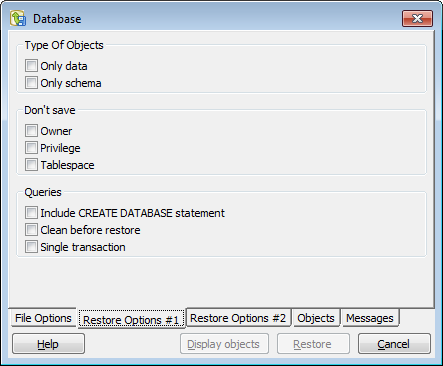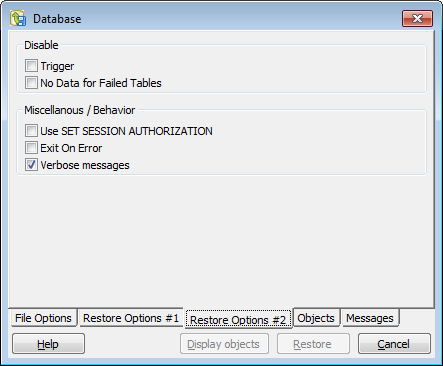Restore




The restore dialogue presents a somewhat simplified interface to the PostgreSQL pg_restore tool.
After you selected a valid backup file, pgAdmin will read the contents of the file when you press the View button. This may take some time, dependend on the size of the file. You can watch the progress on the Messages tab. After the examination has completed, pgAdmin will display the contents on the Contents tab.
Intentionally, the tool will not create the database to be restored. In order to restore a database, first create it using pgAdmin, and then start the restore tool with that fresh database selected. The data will be restored to that database.
You can restore a single object, when in restore database mode (this is displayed in the title bar, as in this example). After examining the backup file, you can select the desired table from the Contents tab, and check the Single Object box. Only that table will be restored.
You can select a table as restore destination. pgAdmin will restore its data if it is present in the backup file.
In order to use backup, the pg_restore tool must be accessible by pgAdmin. This can be accomplished by having it locatable using the path, or by copying it into the same directory where the pgadmin3 executable resides.